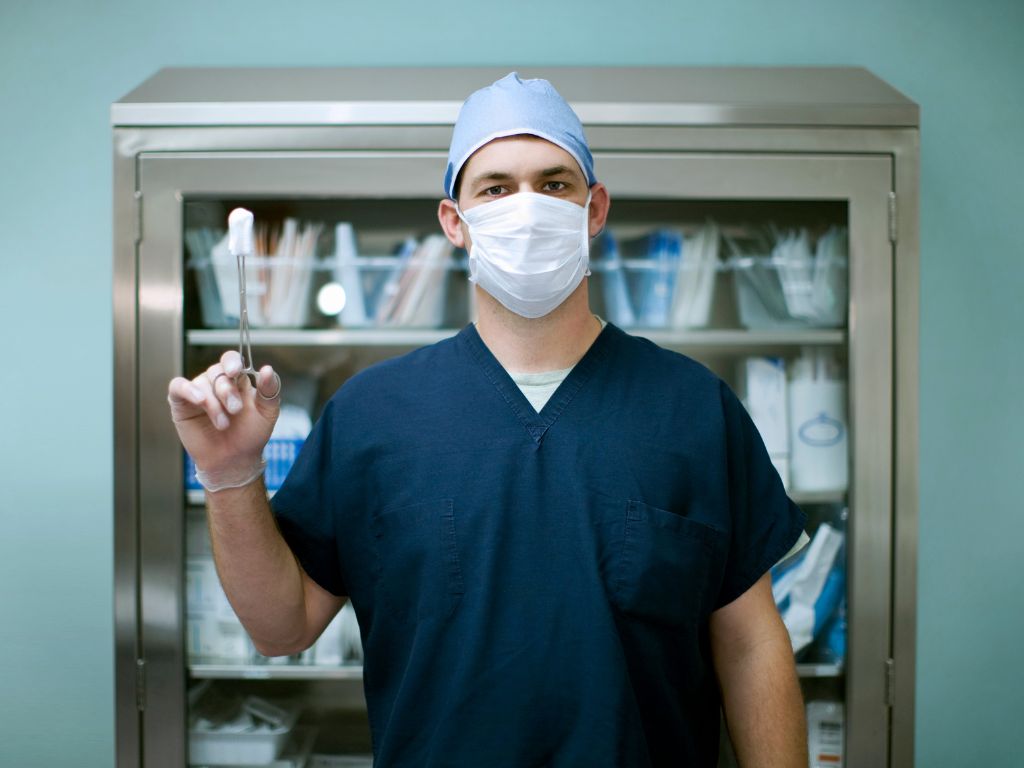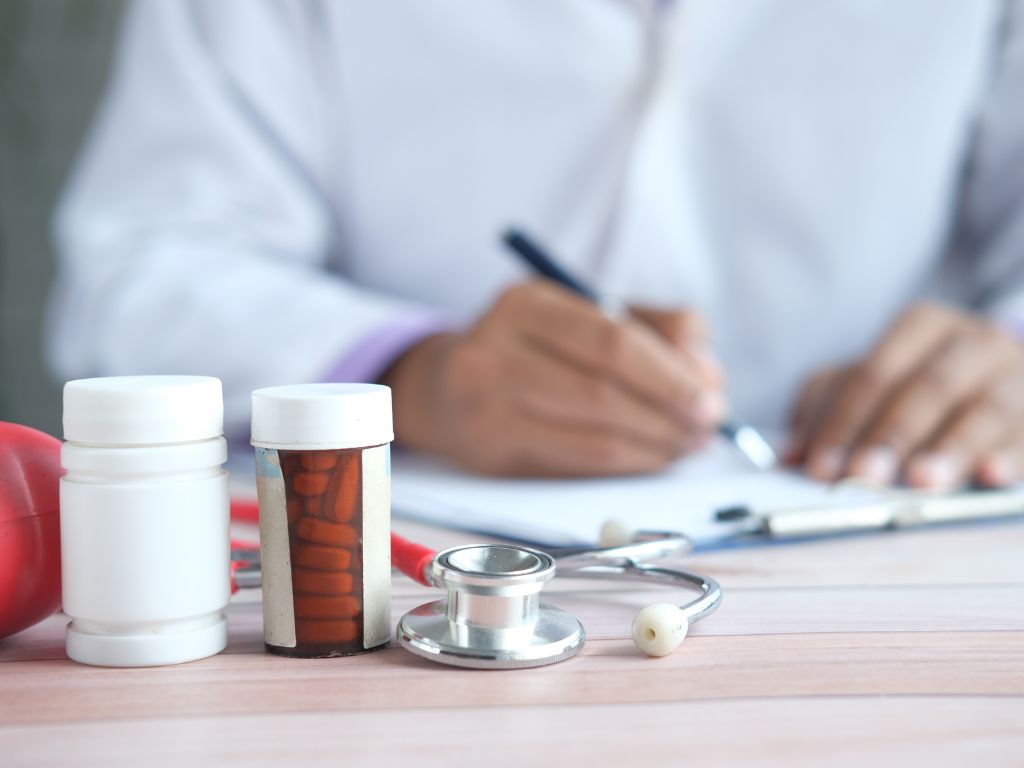Why are athletes, aging men, and biohackers turning to TRT + peptides? Because in their pursuit of peak performance and energy, they are seeking non-traditional medical options to optimize themselves for health and wellness.
In their quest for optimal performance and energy, individuals are exploring unconventional medical avenues to enhance their overall health and well-being.
Let’s explore what these therapies are and how they can be beneficial. Let’s see what they are and how they can be beneficial for us.
Testosterone1 is a sex steroid hormone that plays many roles: it promotes muscle and bone growth, supports libido and sexual function, contributes to red blood cell production (erythropoiesis), influences mood, cognition, and general energy metabolism.
Peptides2 are short amino acid chains (or small proteins) that often act as signaling molecules, stimulating the release of growth hormone (or its upstream regulators), promoting tissue repair, collagen production, and metabolic changes, and sometimes indirectly influencing hormonal changes. They do not replace testosterone but can enhance or modulate physiological processes.
At Vita Bella, we combine TRT with cutting-edge peptides to help you achieve lasting strength, recovery, and energy. Discover how our tailored stacks can transform your journey.
Synergistic Action of Peptides with TRT
The idea of synergy rests on combining testosterone optimizing therapy with peptide-based treatments (especially growth hormone–releasing peptides or those that influence repair/regeneration).
Optimized testosterone levels provides the hormonal groundwork (androgenic + anabolic signals) while peptides improve recovery, repair, metabolic efficiency, and enhance hormone responsiveness.
Potential benefits include faster muscle gain, improved body composition (with more lean mass and less fat), quicker recovery after training or injury, better skin/tissue health, and even enhanced power or endurance. The key benefits can be described as:
Growth Hormone-Releasing Peptides can enhance wound healing and performance outcomes in rats. This demonstrates how peptide-based treatment 3 promotes tissue repair/regeneration.
Testosterone and resistance training together yield measurable gains in lean muscle mass 4 and decreases in body fat. For example, one study reported a ~6% increase in lean muscle mass during an initial phase of TRT.
Some studies 5 describe testosterone’s role in anabolic signaling (promoting protein synthesis, muscle growth, and bone density) and also note peptides (especially GH or GH secretagogues) help with repair, recovery, and metabolic effects. However, most of these are descriptive or preclinical/preliminary.
What are the benefits of combining Peptides with TRT?
They work better together than separately due to synergy which is when two medications produce a combined effect greater than the sum of their separate effects: TRT restores baseline hormones, while peptides amplify recovery and growth. The combination of peptide GH-secretagogues (e.g., CJC-1295, sermorelin, ipamorelin, tesmorelin) with TRT 6 is beneficial because the two hormone systems, testosterone and the growth hormone (GH) / IGF-1 axis, produce synergistic anabolic, metabolic, and recovery effects. This can mean greater preservation or gain of lean mass, improved body composition, better recovery and sleep, and sometimes improvements in bone health and metabolic markers.
1- Muscle hypertrophy
Testosterone increases muscle protein synthesis, satellite cell activation, and myonuclear addition via androgen receptor signaling; GH (and downstream IGF-1) increases amino acid uptake, stimulates intracellular anabolic signaling, and reduces protein breakdown. Together, they act on overlapping but complementary pathways 6, so combined treatment can produce additive or synergistic gains in lean mass and muscle performance.
2- Fat metabolism
Testosterone promotes lipolysis and reduces fat deposition partly via androgen receptor effects, while GH increases lipolysis, reduces triglyceride uptake, and alters VLDL/lipoprotein kinetics; together they often produce greater reductions in fat mass and improvements 7 in metabolic markers than either alone.
3- Faster recovery & sleep improvement
GH (and secretagogues that increase GH) support tissue repair, collagen synthesis, and protein synthesis during recovery. Some GH-releasing peptides/modulators can alter sleep architecture (increasing certain sleep stages) and reduce cortisol transiently, both of which can improve recovery capacity 6. Testosterone itself supports recovery through anabolic effects and improved energy/mood.
Synergistic Protocols: Popular Stacks
To treat multiple diseases, including obesity, testosterone replacement therapy (TRT) is often combined with peptides that can increase muscle mass or reduce fat 8, such as lipidized prolactin-releasing peptide (LiPR) or semaglutide, a GLP-1 analog. Other popular stacks can be discussed below.
The following are the most popular stacks used for various benefits.
1- CJC-1295 + Ipamorelin with TRT: boosting GH + testosterone simultaneously.
CJC-1295 (a GHRH analogue) increases pituitary GH release and IGF-1; ipamorelin is a selective GH-releasing peptide (GHRP) that stimulates GH release with little effect on ACTH/cortisol. Combined, they can produce sustained and/or pulsatile increases in endogenous GH/IGF-1 while TRT supplies tonic androgenic/anabolic signaling, theoretically producing additive anabolic and recovery effects 9.
2- BPC-157 with TRT: joint and tendon recovery.
BPC-157 (a pentadecapeptide derived from gastric juice) appears to promote angiogenesis, modulate growth factor expression, and accelerate tendon/ligament healing in animal models so pairing with TRT (which supports collagen synthesis and muscle anabolism) is used clinically/experimentally to try to speed musculoskeletal repair 10.
3- Tesamorelin with TRT: body recomposition and visceral fat reduction.
Tesamorelin is a GHRH analogue approved for reducing abdominal visceral adipose tissue (VAT) in specific populations (notably HIV-associated lipodystrophy). It increases endogenous GH pulsatility and downstream IGF-1, which can preferentially reduce visceral fat; combined with TRT, this could support simultaneous lean-mass maintenance or gain 11.
Take Your Recovery and Performance Beyond Limits with Vita Bella Peptide + TRT
Struggling with slow recovery, stubborn fat, or fading energy despite consistent effort? Many athletes, aging men, and high-performers face these challenges as natural hormone levels decline.
At Vita Bella, our Peptide + TRT therapy delivers a powerful solution restoring hormonal balance while enhancing tissue repair, muscle growth, and fat metabolism. This synergistic approach helps you recover faster, perform stronger, and feel revitalized from the inside out.
FAQs
1. What are the benefits of combining peptides with TRT?
Stacking peptides with testosterone replacement therapy (TRT) enhances results by combining testosterone’s anabolic effects with peptides’ regenerative and metabolic support. Together, they improve muscle growth, fat loss, recovery, sleep, and overall health.
2. Are peptide therapy and TRT safe to combine?
When used under medical supervision, TRT and peptides can be safe and effective. Professional monitoring ensures correct dosing, minimizes side effects, and tailors therapy to your unique health needs and goals.
3. Which peptide combinations are most popular with TRT?
Commonly used combinations include CJC-1295 + Ipamorelin for muscle and recovery, BPC-157 for joint and tendon repair, and Tesamorelin for reducing visceral fat while maintaining lean muscle.





















